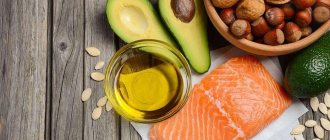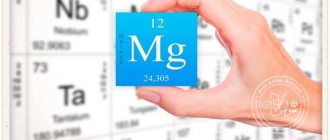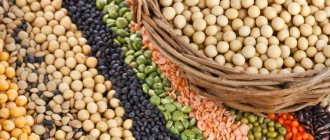Signs of Excessive Substance
Reducing amino acid intake is worthwhile for lupus erythematosus and other systemic diseases, for malignant and benign tumors.
Adults aged 16 to 35 do not require additional arginine intake. Symptoms of excess substance are:
- Unreasonable irritability;
- Tremor of the limbs.
Various types of meat, dairy products, seeds and nuts contain arginine in large quantities. Adding these foods to your diet can help increase your intake.
Consider foods rich in arginine.
Nuts and seeds
Nuts and seeds are significant sources of arginine.
Pumpkin seeds have one of the highest concentrations of the amino acid, with 100 grams of dried pumpkin seeds containing about 3.2 grams of arginine.
Although most people tend to throw away watermelon seeds, they are also a good source of arginine, with about 2.5 grams per 100 grams.
Sesame seeds are also a good source of arginine, containing about 2.3 grams of the substance per 100 g of product.
Many types of nuts contain arginine:
- walnuts contain 2.2 g/100 g;
- almonds contain 2.1 g/100 g;
- pine nuts contain 2.4 g/100 g;
- sesame contains 1.9 g/100 g;
- hazelnuts - 2.4 g/100 g;
- peanuts - 3 g/100 g.
Cooking nuts has little effect on the amount of arginine, but nuts and seeds without excess fat or salt are generally healthier.
Meat is a complete source of protein because it includes all the amino acids the body needs, including arginine.
Some of the best sources of arginine are white meat, especially turkey breast.
The following meat products provide high amounts of arginine:
- turkey contains 1.2 g/100 g;
- chicken contains 1.3 g/100 g;
- fatty pork - 0.7 g/100 g;
- lean pork - 0.9 g/100 g;
- beef -1.1 g/100 g.
Fish and seafood are also rich sources of arginine:
- mackerel contains 1 g/100 g;
- horse mackerel contains 1 g/100 g;
- pollock - 1 g/100 g;
- pike perch - 1.1 g/100 g;
- cod -1 g/100 g;
- pike - 1.1 g/100 g;
- herring - 1.1 g/100 g;
- pink salmon - 1.1 g/100 g;
- red caviar - 1.7 g/100 g;
- squid - 1.6 g/100 g.
Legumes and cereals

Legumes are a family that includes beans, peas and other legumes. They are an excellent source of plant protein.
The following legumes contain high amounts of arginine and other amino acids:
- soy contains 2.6 g/100 g;
- peas contain 1.6 g/100 g;
- lentils - 2 g/100 g;
- beans - 1.1 g/100 g.
Cereals contain less arginine than legumes, but are also a good source of this amino acid:
- buckwheat contains 1.1 g/100 g;
- oatmeal contains 0.7 g/100 g;
- oats (in grains) - 0.6 g/100 g;
- rice - 0.6 g/100 g;
- durum wheat -0.6 g/100 g;
- soft wheat grains - 0.5 g/100 g;
- oat flakes - 0.8 g/100 g;
- semolina - 0.5 g/100 g;
- pearl barley - 0.3 g/100 g.
- Lysine and arginine content in vegetables and fruits
- Lysine and arginine content in berries and fruits
- Lysine and arginine content in cereals and cereals
- Lysine and arginine content in seeds and nuts
- Lysine and arginine content in dairy products
- Lysine and arginine content in meat and meat products
- Lysine and arginine content in seasonings and spices
Top 10 food sources
To avoid suffering from arginine deficiency, be sure to add foods rich in the amino acid to your diet. They are quite affordable and sold in any store.
Table 1 - Best food sources of arginine
| Product | Concentration, mg per 100 g |
| Peanut | 2970 |
| Soybeans | 2600 |
| Egg powder | 2460 |
| Pine nuts | 2400 |
| Hazelnut | 2300 |
| Walnut | 2270 |
| Almond | 2190 |
| Cashew | 2100 |
| Lentils | 2050 |
| Pistachios | 2000 |
Notice a pattern? Almost all types of nuts contain the maximum amount of arginine. If you don't have allergies, be sure to eat a small handful of nuts once a day. But do not overuse: the product is high in calories and can cause heaviness in the stomach. Another good food source is lentils, which vegans often use as a source of protein. To meet the need for arginine, you can cook lentil soups or use it as a side dish.
Other foods rich in arginine are listed in the video:
Beneficial properties of arginine and its effect on the body
Arginine is an amino acid obtained from the breakdown of protein or after fermentation produced by the body itself. These two methods help provide an important means of producing nitric oxide, which plays an important role in the functioning of the circulatory and cardiovascular systems.
Blood carries oxygen and nutrients to all internal organs, so good blood flow is the key to health.
Arginine is produced by the human body, but this amount is not enough to produce the required amount of nitric oxide. This amino acid deficiency can be compensated for by eating foods high in nutrients, classified as conditionally essential.
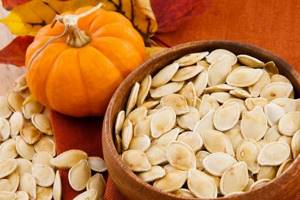
Amino acid is a key and irreplaceable element involved in nitrogen metabolism processes. The children's body does not produce arginine, so it is important to enrich the children's menu with nuts, meat and dairy products, and after 35 years, the production of the substance begins to decline.
By eating foods rich in arginine, you can subject them to minor heat treatment, sufficient for their preparation. During such exposure, the amino acid does not decompose and enters the human body, actively participating in nitrogen metabolism.
For a child’s body, the daily intake of arginine has been established by modern nutritionists at a level of no more than 4 grams. For an adult to function normally, all internal systems need to consume 5-6 grams of amino acid per day.
In some cases, the need for this beneficial substance may increase, and it is necessary to slightly increase the dose of arginine consumption:
- determination of vegetative-vascular dystonia and depression;
- visual identification of rashes on the skin;
- with diagnosed chronic fatigue syndrome;
- with a sharp and uncontrolled decrease in muscle mass;
- liver disease and kidney disease, reduced immunity;
- at different stages of obesity, the presence of excess body weight.
The increased content of arginine in food products common on our table determines the possibility of its constant consumption.
The amino acid has an amazing effect on the immune and central nervous systems; in addition, the following beneficial properties of this substance can be noted:
Read more: Silicon for the human body: harm and benefits of the element, its importance for health
- to normalize general well-being and improve the functioning of internal systems;
- to get rid of premature aging and its visual manifestations;
- the normal content of arginine in the body guarantees the normalization of metabolic processes;
- with the participation of amino acids, the necessary hormones and useful enzymes are produced;
- amino acid takes an active part in cleansing the liver of harmful substances and toxins;
- Increasing arginine helps get rid of excess fat deposits and build muscle.
The interaction of amino acids and other beneficial elements has a positive effect on a person’s external attractiveness. Knowing where the amino acid arginine is found, you can supplement your own diet and provide yourself and your loved ones with good health and preserve natural beauty.
Arginine in foods and the substance produced by the body are the same. The component is used during the fermentation process to convert it into nitric oxide. A new substance will be needed for:
- Protecting the body from stress and its negative effects.
It is stress that often interferes with the formation of hormones, which leads to an imbalance, and often to the inability to have children.
- Providing protective functions - arginine, after conversion to nitric oxide, improves immunity.
- Normalization of blood pressure. With a proper diet and ensuring the intake of arginine from food, the risk of developing hypertension is significantly reduced.
- Normalization of metabolic processes in the body, which promotes weight loss.
- Obstacles to the development of pathogenic processes, including cancer.
- Preventing diffuse intestinal spasm.
- Wound healing after injuries of various types.
- Increasing potency in men.
- Ensuring normal brain function and muscle mass gain.
An important component for the body is produced in small quantities by the body itself. However, disruption of production leads to a deficiency that can be filled with the right food. It is important to understand which foods contain arginine so you can supplement your diet with them.
Arginine has a beneficial effect on the pituitary gland, triggering and normalizing its function. This is what allows a person not to get lost in stressful situations, to remain active, energetic, cheerful, and cheerful.
To ensure timely intake of amino acids into the body, you should learn about foods rich in arginine, as well as the daily requirement of the component:
- Adults – up to 6 grams;
- Children under 16 years old – up to 4 grams.
People who are actively involved in sports that allow them to build muscle mass should increase their intake to 9 grams per day. Often this will require additional intake of the component, but it is better to prefer natural over synthetic. The table allows you to find out where arginine is contained, as well as the recommendations of the trainer and the attending physician.
If we talk about the beneficial properties of arginine, they consist, first of all, in the normalization of metabolic processes. In addition, without this amino acid the normal functioning of the nervous and immune systems is impossible.
It should also be emphasized that it participates in the production of hormones and enzymes. Thanks to this, muscle mass increases, while the content of adipose tissue in the body decreases. In addition, the liver is cleansed of toxins and toxic substances.
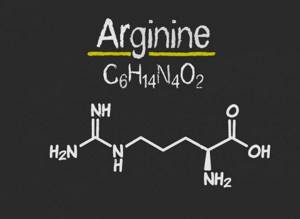
In addition, it is recommended for older men suffering from erectile dysfunction. Recommended for the prevention and treatment of cardiovascular diseases. Has a positive effect on blood vessels.
Deficiency and excess
If there is a lack of amino acids in the body, serious disorders can occur:
- obesity;
- early aging;
- heart attack;
- hypertension;
- atherosclerosis;
- development of severe oncology;
- slowing down the growth of the body;
- risk of blood clots;
- disturbance of brain activity.
Substance abuse can also lead to unpleasant consequences:
- sharp thickening of the skin;
- allergic reactions;
- diarrhea;
- hives;
- decreased blood pressure;
- irritability;
- aggression;
- nausea;
- pancreatic diseases;
- stomach ache.
Functions of amino acids
Arginine performs important functions in the human body. Its content depends on age. Healthy adults are often not deficient in the amino acid. But in the bodies of children and the elderly the substance is not produced enough. Adults may experience amino acid deficiency after prolonged or heavy physical activity. This condition can be corrected by taking arginine in foods.
The most important function of an amino acid is to produce nitric oxide from it. Previously, it was believed that this was an extremely harmful substance. But recently, scientists have discovered the positive effects of nitric oxide on the body. It turned out that the person really needed it. Functions of Nitric Oxide and Arginine:
- Reducing the production of stress hormones, which helps cope with stress.
- Normalization of blood pressure. Stimulates the functioning of the heart and blood vessels. The substance helps cleanse blood vessels from cholesterol plaques and prevent atherosclerosis.
- Elimination of conditions for diffuse spasm of the esophagus.
- Stimulating the immune system. Thanks to this, inflammatory processes pass faster and the rate of wound healing increases. The amino acid destroys viral and bacterial cells, curing infectious diseases.
- Regulating the death of old cells, which contributes to the treatment of cancer.
- Increased production of growth hormone somatotropin.
- Improves fat burning and promotes energy metabolism. If the body does not receive enough glucose, this amino acid will help replenish the lack of energy.
- Acceleration of metabolism in general.
- Stimulating muscle mass growth.
- Increased sexual activity.
Arginine affects the functioning of the pituitary gland, activating it, due to which a person acquires a good mood, energy and strength. If a person does not produce enough amino acids, he can feel it through several signs.
What foods contain arginine?
A number of features of this amino acid lead to the fact that we need to get it from food. Moreover, you need to remember that the daily requirement of the adult human body for arginine is 6.1 g. Which food products contain arginine in the maximum amount?
These are primarily nuts and seeds (per 100 g of product):
- pumpkin seeds - 5353 mg;
- sesame seed - 3326 mg;
- peanuts - 3506 mg;
- pine nuts – 2413 mg;
- walnuts – 2278 mg;
- almonds - 2492 mg.

Arginine is also found in the following foods:
- pork - 1394 mg;
- liver - 1256 mg;
- beef - 1194 mg;
- chicken fillet - 1436 mg;
- domestic duck - 770 mg;
- chicken breast - 1033 mg;
- chicken, dark meat - 1211 mg;
- chicken, light meat - 1397 mg;
- chicken egg – 820 mg;
- cow's milk – 119 mg;
- cottage cheese 2% - 623 mg;
- low-fat cottage cheese - 786 mg.
Read more: Full list of probiotics in food
Fish and seafood:
- anchovies - 1730 mg;
- white fish - 1142 mg;
- raw salmon fillet – 1221 mg;
- tuna - 1769 mg;
- cod - 1065 mg;
- flounder - 1128 mg;
- carp - 1067 mg;
- herring - 1075 mg;
- eel - 1103 mg;
- snails - 2470 mg;
- shrimp - 1776 mg;
- crabs - 1600 mg.
Flour, cereals and legumes:
- wheat flour – 642 mg;
- corn flour – 345 mg;
- unpolished rice – 602 mg;
- dried peas – 2188 mg.
Those with a sweet tooth will be pleased to know that arginine is found in desserts and gelatin-based products, as well as in chocolate and raisins.
Also, this amino acid is now available in the form of special food supplements and is often included in vitamin and mineral complexes.
In order to replenish the body with the missing amino acid, it is necessary to understand where it is found in larger quantities. After all, many products contain this substance, including meat and dairy products, as well as foods of plant origin.
Pumpkin seeds contain L-argenine
There are three groups of products that are a storehouse of conditionally essential amino acids:
- You can replenish the supply of amino acids in the body by introducing grains and seeds into your diet. For example, a product of this group, 100 grams of which contains about 5 grams of arginine, are ordinary pumpkin seeds. It is enough to consume only about 40 pieces daily in order to get the daily requirement of a substance useful for the body. You can get it by eating almonds, pine nuts, sesame seeds, and brown rice. The list of products in this group will appeal to both adults and children.
- The group that includes meat and dairy products is also rich in arginine. In addition, this substance is found in most types of meat, which allows you to diversify your diet. The first place in the table containing the list of products in this group is taken by beef, followed by pork and chicken. Together with the consumption of 100 grams of beef meat, about 2 grams of the necessary amino acid enter the body. The amount of arginine in dairy products is much less than in meat products. So, 100 grams of homemade cottage cheese or milk contains only 1% arginine. But, in order to maintain the required level of amino acids in the body, products from this group can be combined. By consuming meat, milk, and cheeses daily, you will be able to obtain the required amount of the substance responsible for the normal functioning of the body.
Beef contains L-argenine
- The third group includes products that contain amino acids, but in small quantities. This is fish, for example, tuna, salmon, anchovy. Gourmets can replenish their supply of the substance by eating snails and squid. Fish oil contains only a small amount of amino acid, but provided that the diet is balanced, this amount will be sufficient.
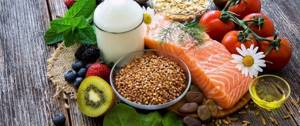
It becomes obvious that the list of products containing the amino acid is varied, and each person will be able to choose one or another food based on their taste preferences. In addition, the availability of such food will make the diet tasty and healthy.
Let's look at foods rich in arginine using the following table as an example.
Product, 100 g Arginine, mg
| Pork | 1394 |
| Chicken fillet | 1436 |
| Salmon fillets | 1221 |
| Chicken egg | 820 |
| Milk | 119 |
| Pine nut | 2413 |
| Walnut | 2278 |
| Pumpkin seeds | 5353 |
| Wheat flour | 642 |
| Corn flour | 345 |
| Brown rice | 602 |
| Buckwheat bread | 982 |
| Peas | 2188 |
Salmon meat is rich in L-argenine
You can buy arginine on the American website, where there are always promotions, and using our link you are guaranteed to receive an additional 5% discount. It also works. Therefore, if you have already decided which arginine is best for you, then it can be found on.
To enrich your own diet with a useful substance, you can familiarize yourself with the table of products with the amino acid arginine, these include:
- pork, beef and chicken fillet;
- pumpkin seeds, sesame seeds and peanuts;
- tuna, snails and chicken eggs;
- pine nuts and walnuts, almonds;
- fresh milk and cottage cheese.
All these products can be safely included in the menu for adults and children, to enrich the diet and ensure normal arginine content in the body.
To avoid a shortage of the substance and in the absence of contraindications, you can use the table data on the content of arginine in food products. There are leading products that you should first pay attention to.
Seeds and nuts
These are real leaders in the content of components valuable for the body. The largest amount is collected in pumpkin seeds - per 100 grams it contains 5400 mg of arginine! Next in descending order are the seeds:
- Sesame – 3300;
- Almonds – 2500;
- Walnuts and pine nuts – 2420.
There is arginine in other nuts and seeds, but the content will be lower.
Fish and seafood
Compared to seeds and nuts, the arginine content here is somewhat lower, but still high enough not to discount seafood:
- Snails – 2470 mg/100g;
- Anchovies, shrimp, tuna – within 1700–1800 mg/100 g;
- Crab – 1600 mg;
- Salmon, flounder, herring – up to 1200 mg.
Read more: Which foods contain the most vitamin b2?
Cod and carp close the list of leaders in terms of arginine content in fish, with about 1050–1100 mg/100 g.
Meat also contains arginine in large quantities, but most of it is found in:
- Chicken (white meat) and chicken fillet – 1400 mg/100 g each;
- Lean pork and dark chicken meat – 1200–1300 mg/100 g;
- Beef – 1200 mg/100 g.

Last on the list is duck meat, which contains about 800 mg/100 g.
Dairy
This includes not only milk, but also lactic acid products, which can also bring a valuable component to the body - arginine, which is most abundant in:
- Cottage cheese with minimal fat content – 800 mg/100 g;
- Cottage cheese with low fat content - only about 2% - 600 mg/100 g;
- Fresh cow's milk – no more than 120 mg/100 g.
Eating low-fat cottage cheese becomes a priority if a person needs not only to lose weight, but also to compensate for the lack of a valuable component in the body.
This component is also found in cereals and legumes, and therefore those who consume such products receive from:
- Dry peas – 2200 mg/100 g;
- Wheat flour and unpolished rice – 600 mg;
- Corn flour – up to 350 mg/100 g.
In addition to these products, you can look for arginine in dried fruits and chocolate, gelatin and barley. But it’s worth mentioning right away that the proportion of such a component in these food products will be small. There is a little more of it in chicken and quail eggs and in varieties of cheese with a low fat content, but the options described above also significantly exceed these in terms of the content of the valuable component.
Is it possible to get by with only products?
Yes, but subject to a balanced and healthy diet. This is not always feasible, so many suffer from a lack of nutrients. To reduce the risk of deficiency, eat meat, fish and dairy regularly. Choose low-fat varieties: the more dietary product you consume, the more arginine will enter the body. Don't forget about plant foods. Fiber from porridges will not only help saturate the body with amino acids, but also improve digestion, and nuts contain many fatty acids. If you are used to following strict diets, give up this habit and switch to a normal healthy diet with plenty of lean meat, fresh vegetables, herbs and fruits. In the summer, lean on watermelons: they are rich in the amino acid precursor citrulline. Knowing which foods contain the amino acid arginine, you don’t have to worry about a deficiency of the useful substance.
Signs of underproduction
The following body conditions and diseases indicate the need to replenish amino acid reserves:
- State of depression, depression;
- Persistent constant fatigue;
- Colic in the liver area, indicating cholelithiasis;
- Kidney disease;
- Decreased immunity, frequent illnesses;
- Reduced muscle mass;
- Fat deposits on the sides and waist;
- Unhealthy skin;
- Heart and vascular diseases;
- Deterioration in brain function;
- Aging of the body that does not correspond to age;
- Hormonal imbalance.
Additional amino acid intake is required for adults over 35 years of age and children. The norm for taking the substance is 4000 mg for children, 6000 mg for adults. If you eat foods containing arginine, these numbers are quite possible to achieve. We will explain below what the substance is present in.
Nuts and seeds
Replenishment methods
Scientists who studied arginine received the Nobel Prize in Medicine. It turned out that the substance forms nitric oxide, which is necessary for the health of the cardiovascular system. That is why people prone to diseases of the circulatory system need to eat as many foods as possible that contain healthy amino acids.
Normally, an adult’s body should receive up to 6 grams of the substance daily. For athletes, this figure can reach up to 9 grams.
The human body can produce arginine, but often this concentration is not enough to maintain health. Amino acid synthesis is impaired in the elderly, adolescents, children and people with certain diseases. They definitely need to eat foods containing arginine and also take dietary supplements.
Foods containing amino acids
Product typeNameAmount of arginine (g)
| Nuts and seeds (seeds) | Pumpkin | 5,4 |
| Sesame | 3,3 | |
| Peanut | 3,5 | |
| Almond | 2,5 | |
| Cedar | 2,4 | |
| Walnuts | 2,4 | |
| Seafood | Sea snails | 2,5 |
| Shrimps | 1,8 | |
| Tuna (fillet) | 1,8 | |
| Anchovies | 1,7 | |
| Crabs | 1,6 | |
| Salmon | 1,2 | |
| White fish | 1,1 | |
| Flounder | ||
| Herring | ||
| Carp | ||
| Cod | ||
| Legumes | Peas | 2,2 |
| Meat | Chicken (fillet) | 1,4 |
| Pork | 1,2 | |
| Chicken (breast) | 1,0 | |
| Beef | 1,2 |
The entire range of products is not shown here. Some amino acids are found in dairy products, but they contain less than 1 g of the substance per 100 g. Arginine is present in food products - in raisins, chocolate and gelatinous foods, but in insignificant quantities. Nuts and seafood contain more of it.
From the table above it can be seen that to increase the arginine content in the body, you can develop a personal menu for yourself. Meat-eaters can profitably eat meat - beef, chicken and pork; vegetarians - peas, nuts and seeds; accustomed to sea food - seafood and fish. Products rich in arginine are quite accessible to anyone. But for some diseases, a specialist may prescribe medications that include this amino acid.
conclusions
Most adults produce and consume adequate amounts of arginine, but children must obtain additional amounts from foods to support growth and development.
Some disorders can lead to arginine deficiency. In this case, a person may need to include arginine-rich foods in their diet. A variety of foods are rich in arginine, including legumes, nuts, meat and fish. You should consult your doctor before using arginine supplements.
Harm and contraindications
Some evidence suggests that high levels of arginine may worsen herpes symptoms, which can lead to outbreaks because the herpes virus needs arginine to reproduce.
Additionally, ingesting more arginine can indirectly cause ulcers by disrupting the balance of arginine and another amino acid called lysine.

Lysine can treat and prevent herpes, and it shares an absorption pathway with arginine. If more arginine is present, the body cannot absorb enough lysine.
People with cirrhosis of the liver or low blood pressure should avoid taking arginine. These supplements are also not suitable for those who have recently had a heart attack.
Health Benefits of Arginine
Arginine supplements can benefit a variety of systems in the human body.
Research since 2013 suggests that arginine supplements may improve blood flow in people with uncomplicated diabetes. Improved blood flow can reduce the risks and impact of several cardiovascular diseases, including coronary heart disease and angina.
However, arginine is not suitable for all heart conditions. For example, most doctors do not recommend taking arginine if a person has recently had a heart attack.
Arginine can also treat erectile dysfunction that occurs as a result of heart disease. For example, if a blood vessel problem is making it difficult to maintain an erection, your doctor may recommend an arginine supplement to improve blood flow.
Arginine also:
- helps the kidneys work more efficiently;
- promotes wound healing;
- stimulates the immune system;
- maintains hormonal balance.




